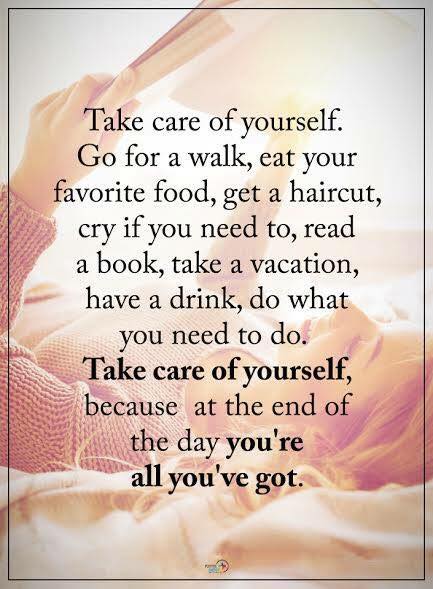Painful joints can be a common occurrence for many people. It’s often ignored and considered a normal part of life, but it can mean much more.
Figuring out the cause of your painful joints is essential because it’s the only way to treat it. The treatment options vary based on why you have the pain. Once you know why it’s happening, you can address the problem and ease the discomfort.
Joint pain can result from many conditions, including injury, infection, arthritis, fibromyalgia, and hypothyroidism. Knowing signs of something worse can help determine why you have joint pain. Once you’ve identified the signs, you can talk to your doctor to see what you can do to feel better.
What to Watch for and Why Painful Joints Could Be Important
The signs accompanying painful joints can tell you much about the cause. You’ll want to pay attention to the location of the pain, such as the shoulder, ankle, or knee. Consider whether you experience limping, joint locking, or decreased range of motion.
Additionally, you might experience the following issues near your joints:
- Redness
- Tenderness
- Swelling
- Warmth
- Stiffness
- Weakness

Ten Signs That Your Painful Joints Might Mean Something Worse
Millions of Americans experience joint pain each day, and many times it’s a debilitating experience. You must determine the cause so that you can live a fulfilling and joyful life. Getting a diagnosis is essential, and that involves identifying the signs.
1. The Pain Moves Around Your Body and Causes Fatigue
If your joint pain changes locations in your body and causes fatigue, it could indicate fibromyalgia. Fibromyalgia results in chronic and acute flare-ups of pain, and you might also experience brain fog and memory issues. This condition affects 2-4% of the population in the United States and more commonly affects women.
You’ll experience tenderness throughout your body and musculoskeletal pain. There isn’t a diagnostic test for fibromyalgia, so telling your doctor your signs is essential.
2. Your Painful Joints Are Also Swollen and Stiff
Painful, swollen, and stiff joints are a sign of psoriatic arthritis. You’ll also have psoriasis, a skin condition that causes red, itchy, scaly patches. Psoriatic arthritis is an autoimmune disease affecting nearly 30% of people with psoriasis.
3. You Have a Rash
When a rash accompanies your joint pain, it could indicate Lyme disease. Lyme disease is a tick-borne illness that results in painful joints and a bulls-eye rash. Typically, only one or two joints are affected, and the episodes decrease as time passes.
4. Your Big Toe, Ankle, and Knee are Red, Warm, or Swollen
When your big toe, ankle, and knee joints hurt, it could signify something more. If those areas become red, warm, or swollen, it could indicate gout, a type of inflammatory arthritis. It affects people with high uric acid levels in their blood.
When the uric acid levels increase, it builds up and forms crystals in your joints. Your immune system will try to destroy the crystals, leading to inflammation and intense pain. It typically only attacks one joint, but the experience is sudden, severe, and involves a burning sensation.
5. It Gets Better with Movement
If your joint pain eases when you move around, it could be a sign of rheumatoid arthritis. Rheumatoid arthritis is a chronic autoimmune disease affecting your wrists, elbows, hips, and neck.
This condition worsens when you rest and involves chronic flare-ups. While it predominantly affects your joints, you might also experience the following symptoms:
- Muscle pain
- Fatigue
- Weight loss
- Low-grade fever
- Tingling or numbness in your hands
Another condition that gets better with movement is called ankylosing spondylitis. This rare condition affects your back, neck, and sacroiliac joints at the base of your spine.
It causes inflammation and fusing of the vertebrae, resulting in pain in your lower back and hips. If you have ankylosing spondylitis, you might also experience stiffness in the morning that lasts more than 30 minutes.
6. You Also Experience Fatigue, Weight Gain, and Cold Intolerance
If you experience fatigue, weight gain, cold intolerance, joint pain, it could hint at a thyroid condition. Hypothyroidism is an underactive thyroid gland, causing an imbalance in your hormones. Along with the other symptoms mentioned, you might also experience:
- Stiffness
- Constipation
- Dry skin
- Puffy face
- A hoarse voice
- Muscle weakness
7. The Painful Joints Worsen with Movement
While some conditions get better with movement, others worsen. If your pain level increases as you move around but ease up when you rest, it could be osteoarthritis. It affects your knees, hips, neck, lower back, and fingers as it involves the breakdown of cartilage.
Osteoarthritis often occurs because of aging, but it can be caused by trauma, too. The cartilage in your joints cushions between your bones, helping them glide past each other. If the cartilage wears away, it causes the bones to grind together, causing intense pain when you move.
Pain from osteoarthritis starts with intermittent but sharp pains, eventually becoming a constant ache. It results in joint stiffness, swelling, and limited range of motion. As the most common chronic joint condition in the United States, you don’t want to ignore the signs.
8. You Experience a Loss of Interest in Things You Once Enjoyed, Sleep Problems, and Hopelessness
Depression can cause joint pain, so if you have any of these signs, too, you’ll want to address the issue. You might also experience appetite changes and difficulty concentrating.
9. You Also Have a Fever
If you have a fever and joint pain, it could indicate septic arthritis, occurring when a joint becomes infected. This type of arthritis causes acute knee, ankle, wrist, and hip symptoms. Bacteria often cause it but can result from fungus or mycobacteria.
Your affected joint will get warm, stiff, and swollen. The infection typically starts in the blood before moving to the joint, but it could result from joint surgery, too.
10. The Pain Moves from One Joint to Another
If your joint pain moves from one joint to another, it is a sign of lupus, a chronic autoimmune disease. It affects your knees, wrists, and finger joints, and the pain will often be on one side of your body. The pain is typically short-lived but can move around your body throughout the day.
You must seek professional help immediately if you think you have lupus. It affects your organs and muscles and can cause many other issues.
Finding a Diagnosis for Your Painful Joints
If you experience painful joints, you should speak with your healthcare provider. It could indicate a more serious issue that needs medical treatment. Even if you’ve already gotten a diagnosis, you should talk to your doctor anytime you:
- Experience pain in a new area
- Get a different type of pain
- Have new symptoms
There are instances when you should seek emergency medical care for your painful joints. These instances include:
- Getting a fever
- Losing weight without reason
- Being unable to function because of the pain
- Develop significantly swollen or hot joints
- Experiencing sudden numbness or burning sensation
- Muscle weakness
When you seek professional help, healthcare providers use diagnostic tools to determine the cause of your joint pain. The doctor will want to know your medical history and perform a physical examination. They’ll also request blood tests, imaging tests, and a joint aspiration procedure.
In rare cases, your doctor might request a biopsy or tissue sample, as well. The tests your doctor requests depend on your symptoms, making it essential to tell them everything. It might help if you write down the following information so that you don’t forget anything:
- Location of the painful joints
- The intensity of the pain
- The time of day it’s worse
- What you were doing when the pain worsened
- If anything makes it better or worse
- Whether you’ve had a recent fever
- If you’ve experienced fatigue
- Recent trauma, surgery, or infection
Making a note of all these things will help your healthcare provider narrow down the cause. It’ll help with a diagnosis and treatment plan to manage the symptoms.
Treatment of Painful Joints
Your treatment plan will depend on the diagnosis of your painful joints. A medical professional may recommend self-care tips, medication, physical therapy, or, in rare situations, surgery.
Self-care strategies that you can do at home to alleviate symptoms include:
- Gentle stretching
- Rotating ice or heat on the afflicted area
- Supportive wraps
- Resting
- Aerobic or strengthening exercises
- Focusing on a nutrient-rich diet
Final Thoughts on Signs Painful Joints Might Mean Something Worse
Painful joints can be debilitating, but that’s not the only reason to worry about it. Joint pain is a sign of many conditions, so learning more about it and talking to your healthcare provider is essential. Some problems are long-lasting, while others are temporary, but either way, you must find pain relief.
Once you’ve received a diagnosis, you’ll know what you are dealing with. Then, you can determine a treatment plan or a way to relieve symptoms. Pay attention to the signs of painful joints to get your needed help.




















